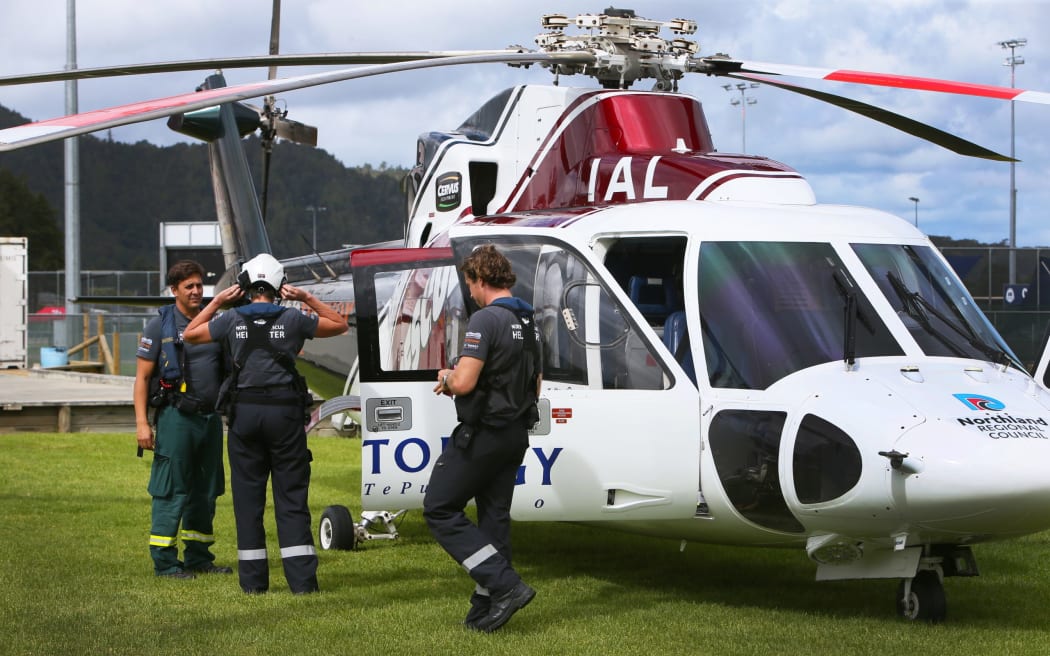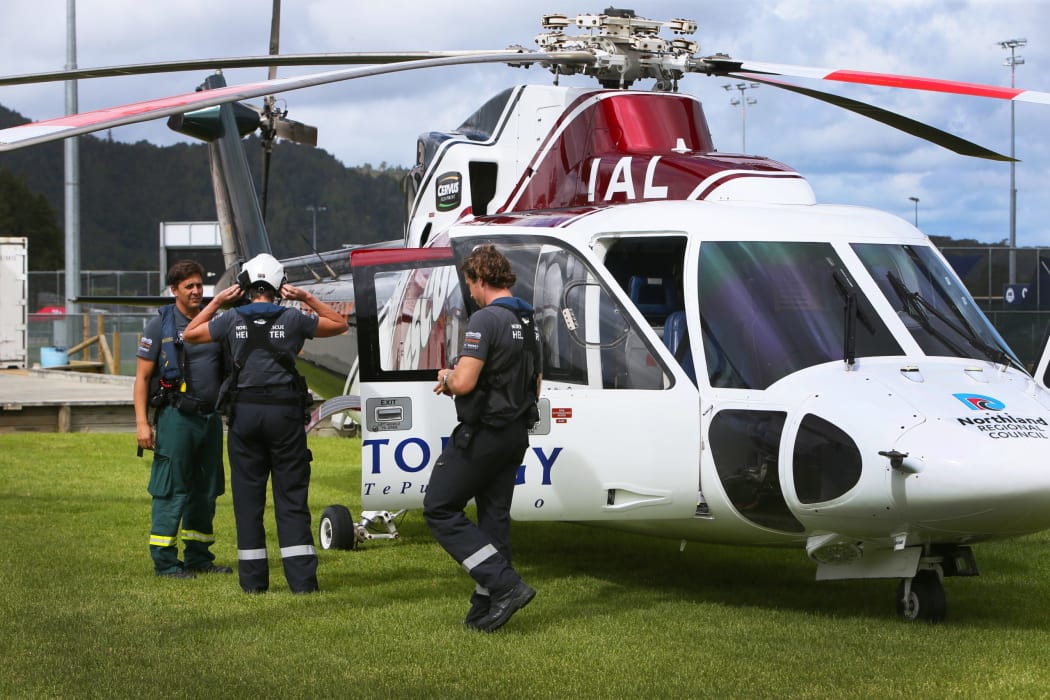Residents around Onerahi airport would effectively be “carrying the can” for the rest of the region with major new “noise pollution” expected if the rescue helicopter base shifts there from Kensington, says Save Onerahi from Undue Noise Disturbance (SOUND) spokesman Paul Doherty.

Northland emergency services trust helicopters’ Kensington base.
Photo: Northern Advocate, Tania Whyte
Extra home insulation and ventilation for Onerahi airport homes were on the radar as noise mitigating options at last week’s Whangārei District Council (WDC) airport noise committee meeting.
WDC general manager planning and development Dominic Kula, told last week’s meeting that who paid for any home noise mitigation work was a key question.
Kula said the extra costs of shifting from Kensington to Onerahi were in fact technically the responsibility of the Northland Emergency Services Trust (NEST). He said the council would be looking at who paid for potential mitigation – NEST, the council, the government and/or homeowners.

Doherty said ratepayers across Northland all benefited from what was a valuable region-wide helicopter emergency rescue service.
He said Kensington residents had long borne the “noise pollution” cost of the region’s rescue helicopter.
A trust founder and Kensington resident Roger de Bray and his wife Ruth were forced to spend $4000 on new ceiling noise insulation for their home in April last year. The couple also installed soundproof window glass to try to shut out the noise from NEST’s existing base across the road.
Doherty said new Whangārei District Council (WDC) mapping shows the amount of new airport noise produced in some places in and around the facility – should the Northland rescue helicopter shift to Onerahi – was greater than the District Plan allowed.
The NEST shift would mean the sudden arrival of about 1300 helicopter flights annually in and out of the airport at Onerahi, with the operation increasing in size each year.
Region-wide rating will be among topics at an emergency Onerahi residents’ helicopter shift opposition meeting near the airport on Wednesday evening.
Meanwhile, SOUND lawyers were expected to submit the group’s statement of claim to WDC next week as part of early steps towards potentially filing for a judicial review in the High Court over the helicopter shift.
Doherty said the group was challenging aspects of the shift.
Kula said last week the District Plan’s airport noise production rules applied to general airport noise but not to emergency services helicopters, which were exempt under the Plan. The District Plan has rules around how much noise the airport can produce and where, including limits to these via virtual ringfencing of specified geographic areas.
Doherty said SOUND would be legally challenging that position.
If the base shift happened, SOUND wanted the emergency services helicopter noise to be included in the overall maximum sound limits allowed for Whangārei airport as a whole, and not to be exempt.
SOUND wanted the trust’s non-emergency ambulance transfers to instead be done by fixed-wing planes. Ambulance transfers made up a large chunk of NEST’s work. SOUND also wanted all helicopter training shifted away from the airport.
SOUND’s Wednesday night meeting will see opponents aim to top up already-committed funds for the $100,000 cost of the group’s High Court action against WDC.
Local Democracy Reporting is Public Interest Journalism funded through NZ On Air




